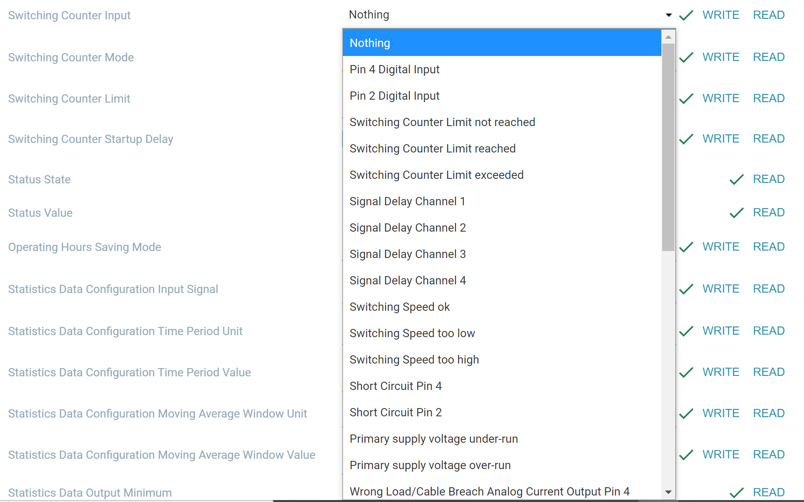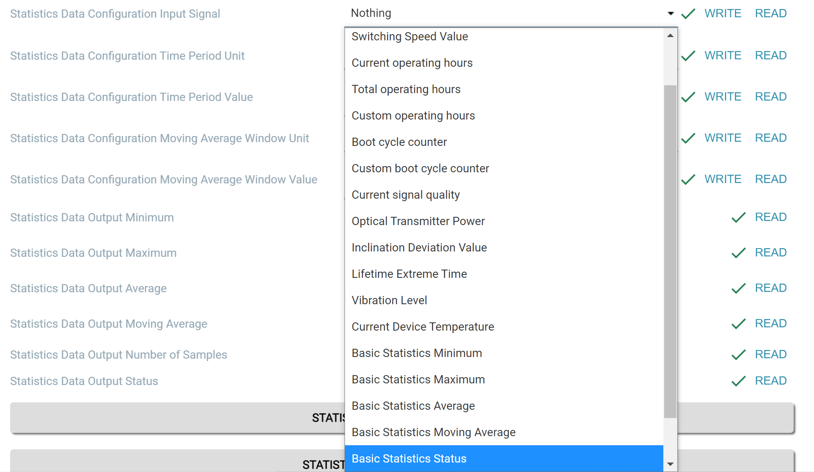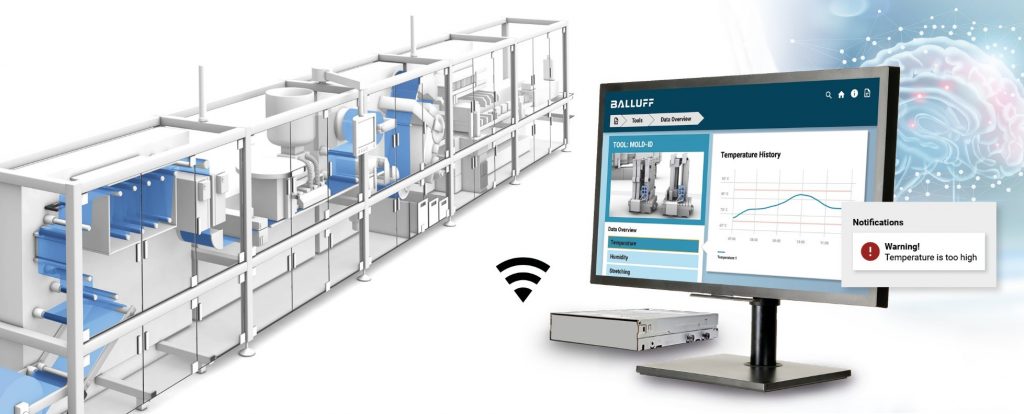Counting functions in SAMS devices
There are several reasons to outsource certain tasks from a higher-level control system and have them performed directly in the devices in the field. Reducing the control code and thus reducing memory space and cycle times can, for example, increase the efficiency of the system. When using different control types, a task does not have to be implemented multiple times on different platforms, but only once in the device. This reduces effort and saves time in programming and commissioning the plant. Several counting functions are therefore implemented in the SAMS components, which perform the corresponding tasks directly “on site” and only report the status, such as “maximum value reached” or “counter overflow”, to the controller. The functions are merely parameterized in the components without having to write a program line.
Execution:
The following counting functions are available in each SAMS component:
- Boot Cycle Counter
- Operating Hours Counter
- Switching Signal Counter
- Basic Statistics
Boot Cycle Counter and Operating Hours Counter automatically start each time the component is started. The current counter values can be queried via acyclic commands.

Switching signal counter and basic statistics can be configured flexibly, depending on the requirement.
Switching Signal Counter:

A variety of internal signals are available in each SAMS component as input signals to be counted. In addition to the “classic” switching signals of the component, incoming signals on pin 2 or pin 4, switching speeds or even switching delays can also be recorded. Likewise critical situations can be counted via alarms (inclination, vibration, signal quality, …) or also short circuits, cable breaks or overload. To be able to record several signals, the logic functions provide the option of linking signals with each other and counting the respective logical results.

Basic Statistic:
Compared to the counting function, the “Basic Statistic” function goes one step further and offers the possibility of creating a statistical evaluation via the recorded counting pulses.
Here, too, many possible input signals are available, whereby these are primarily pre-recorded counting results from the switching counters, operating hours counters or the boot cycle counter. However, a statistical evaluation can also be created using current condition monitoring values such as signal quality, vibration, device temperature or inclination detection.

For the statistical evaluation either a certain number of signals can be defined, which should be recorded, or a certain time span.
The result is information about the min. and max. values within the defined range, as well as the statistical mean value.
Applications:
While the acquisition of switching signals via the various counting functions contributes to relieving the control level, the Basic Statistics function can provide similar relief for higher-level IT systems. Basic information such as min. / max. value determination or a statistical average of certain values can already be formed in the component and transported to higher-level systems as a result. This also reduces the overall communication volume in a plant, reduces the load on the communication paths and thus this function can also contribute to improving the efficiency and effectiveness of the machines and plants.

Discover more smart sensor features of our Smart Automation and Monitoring System in this Blogpost






